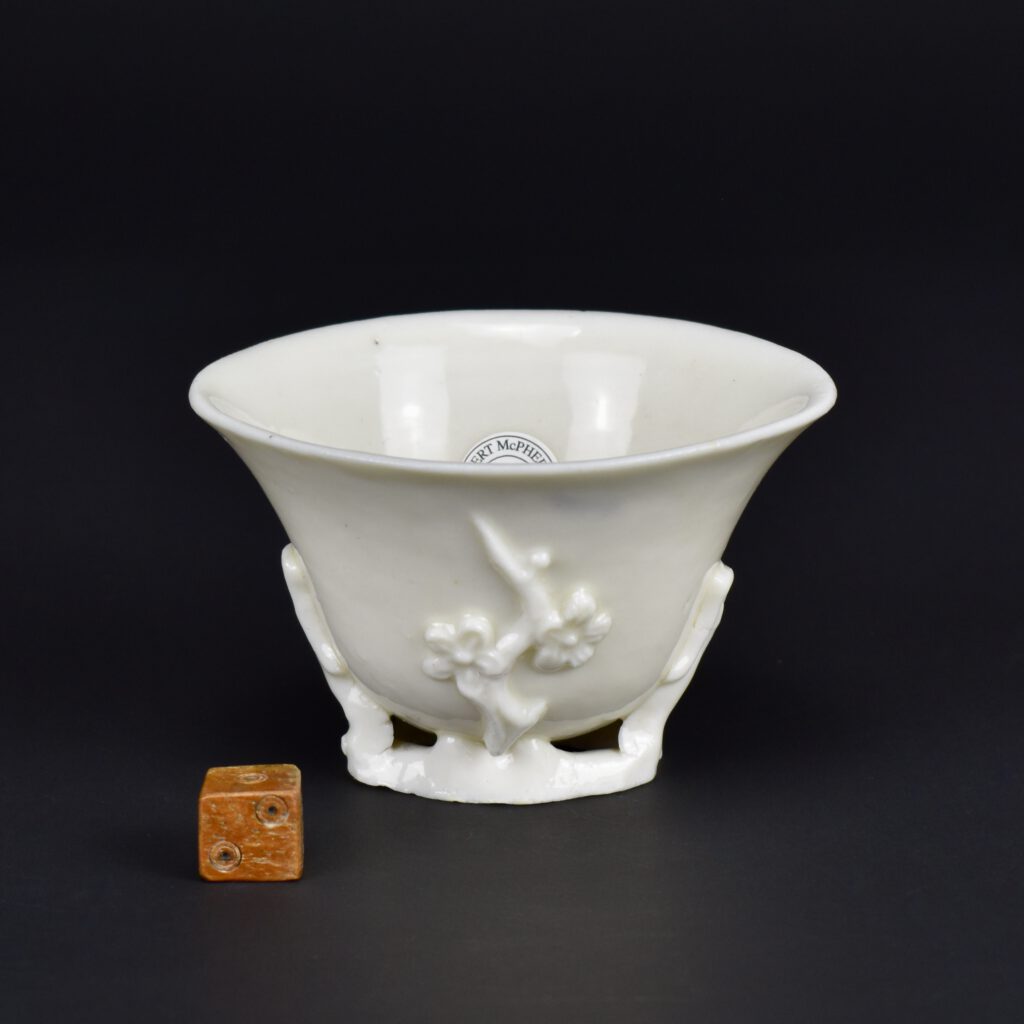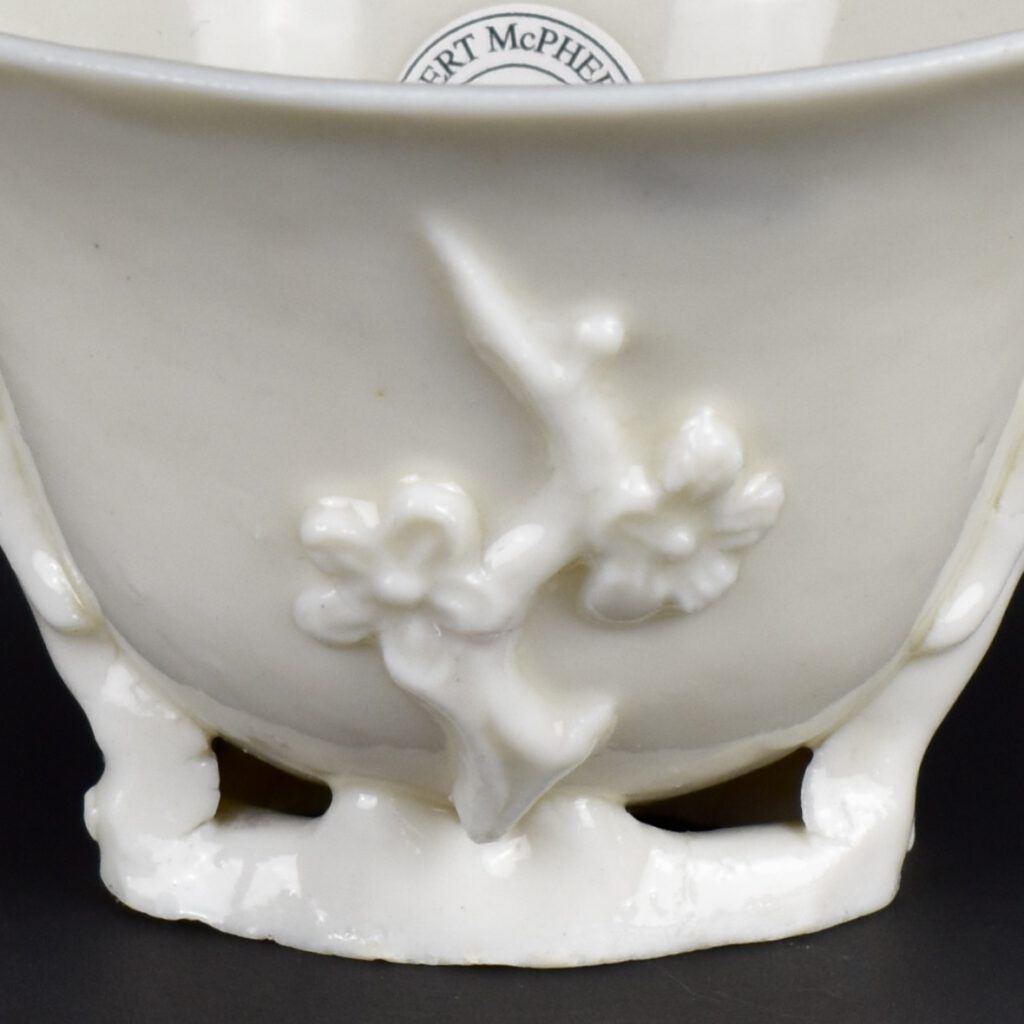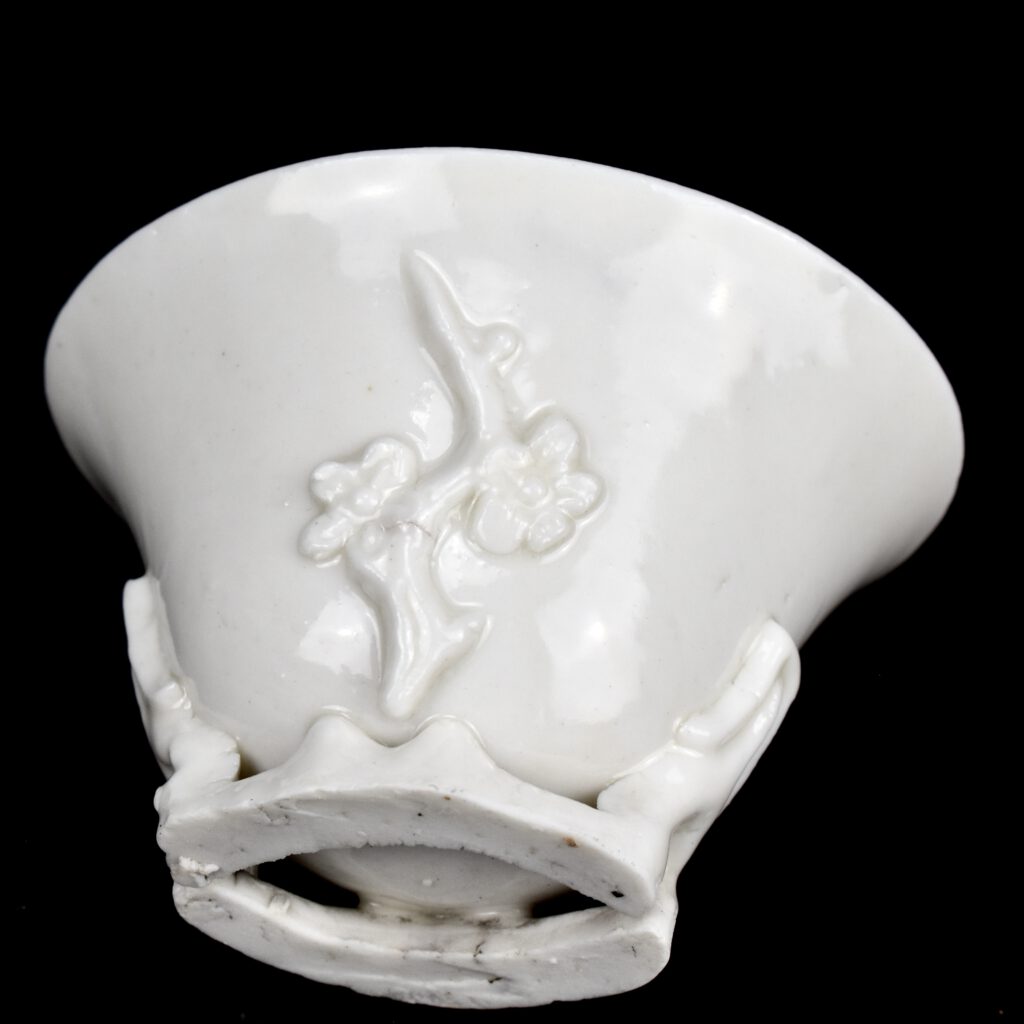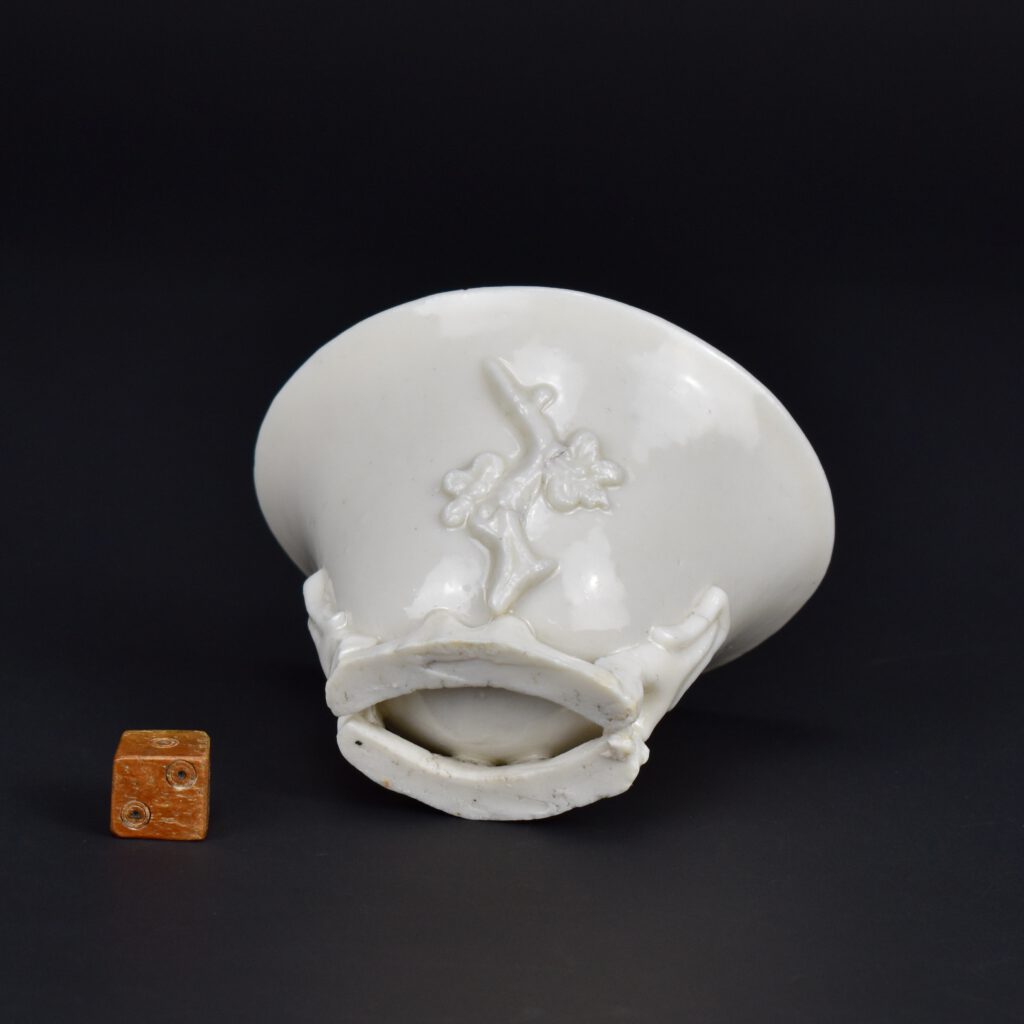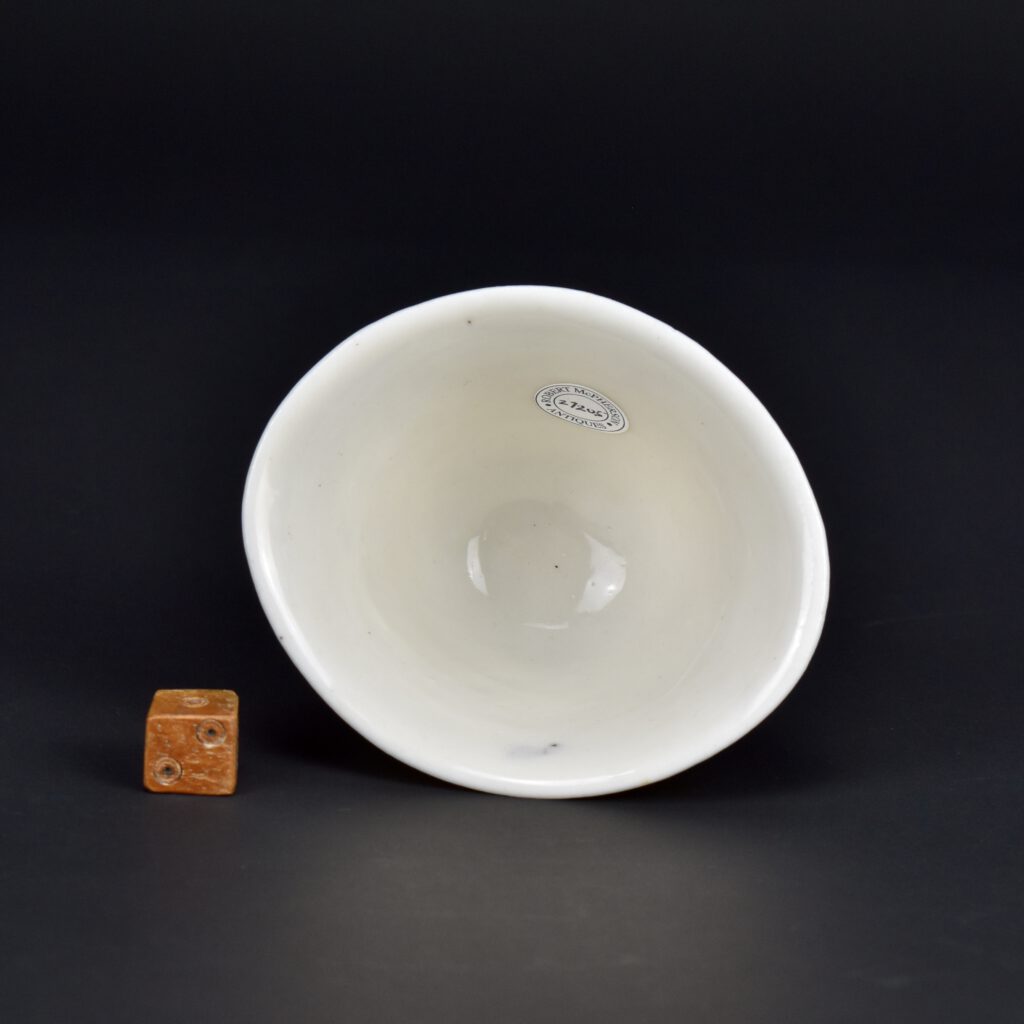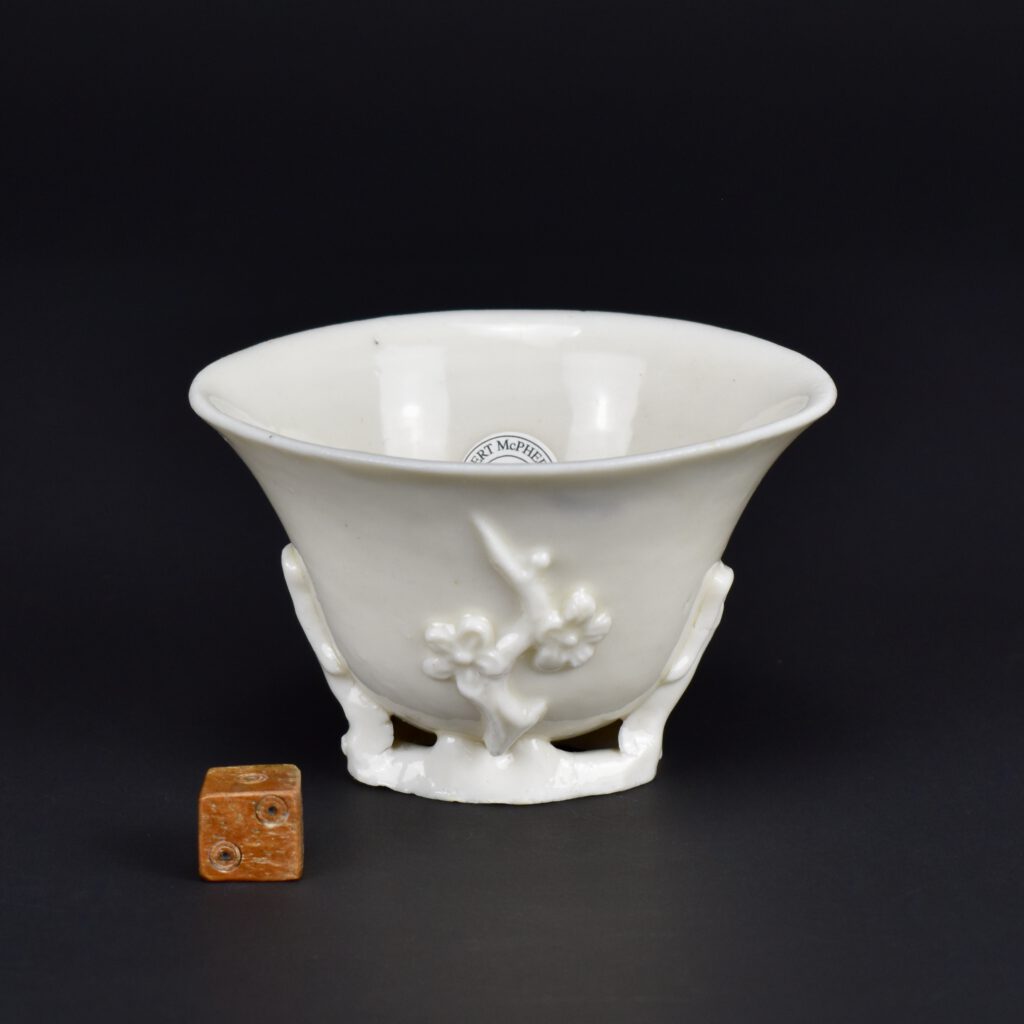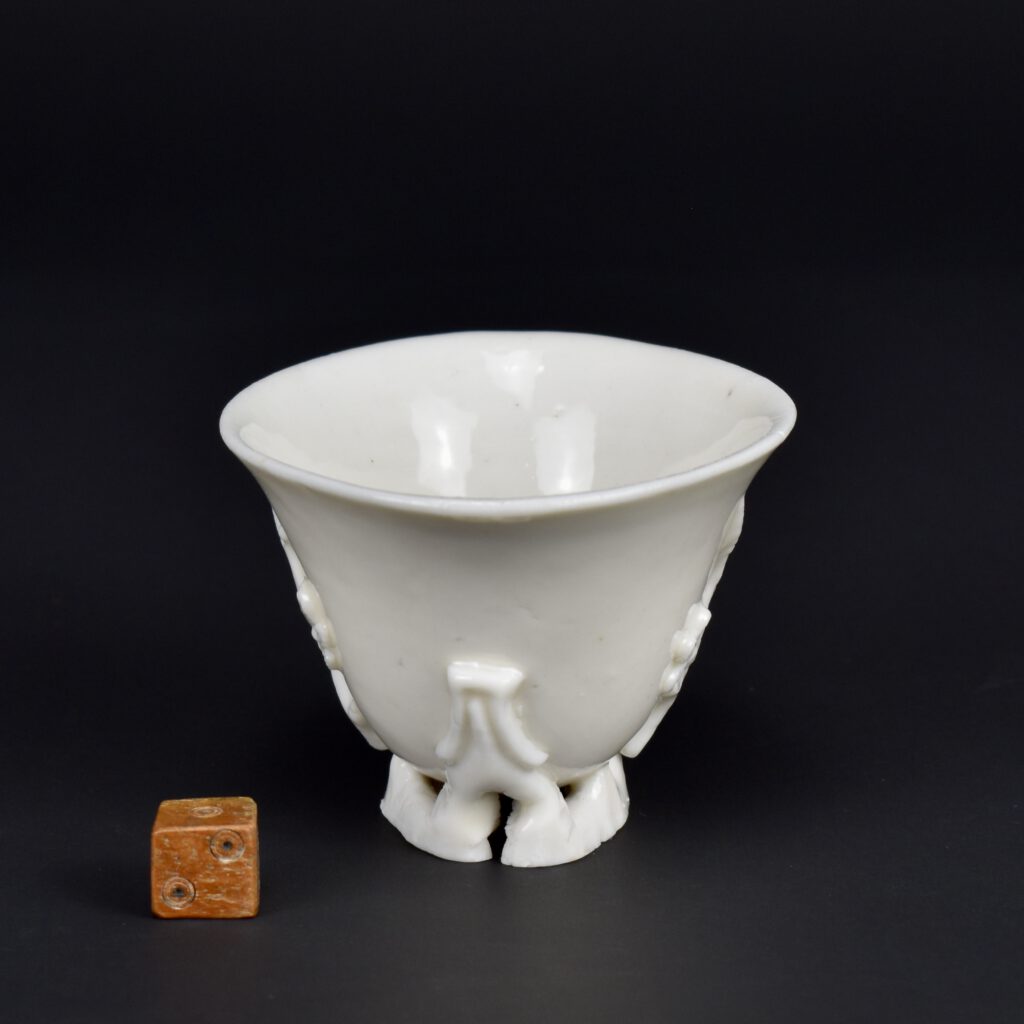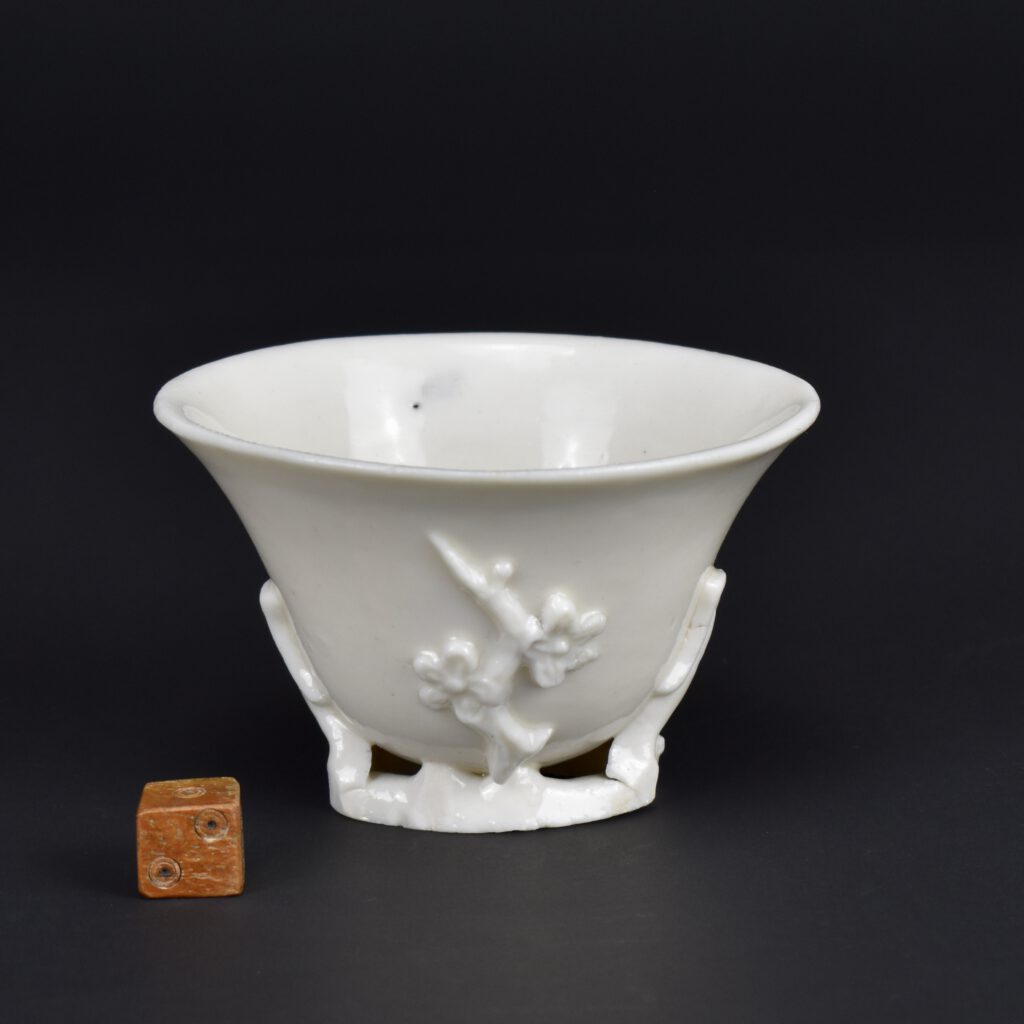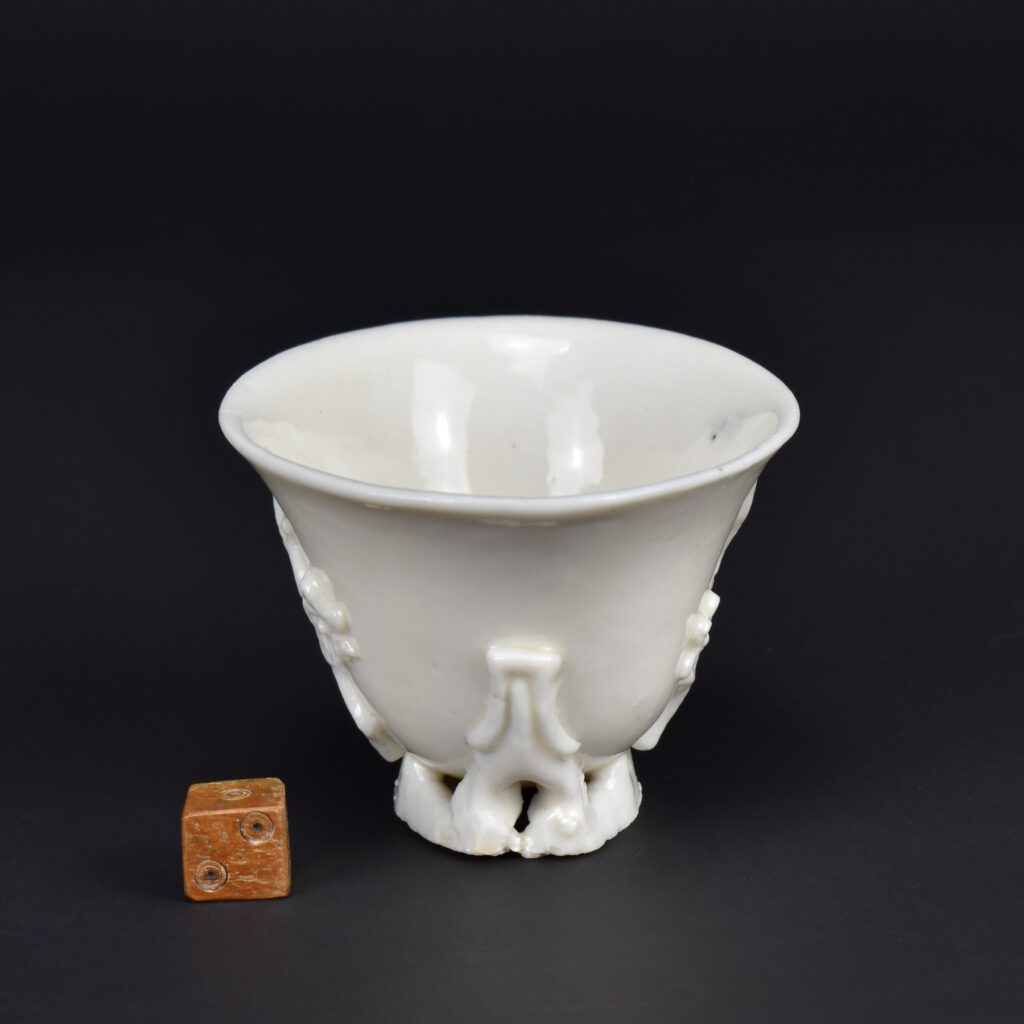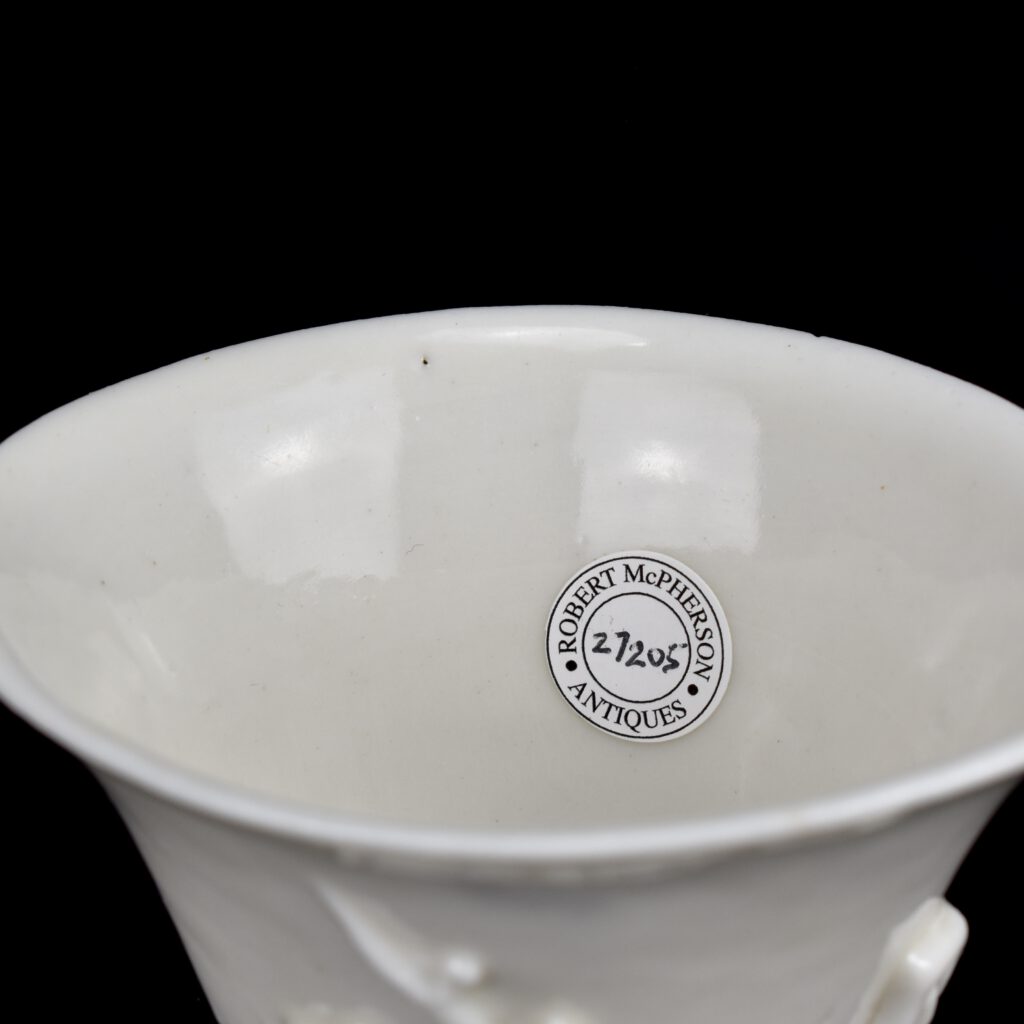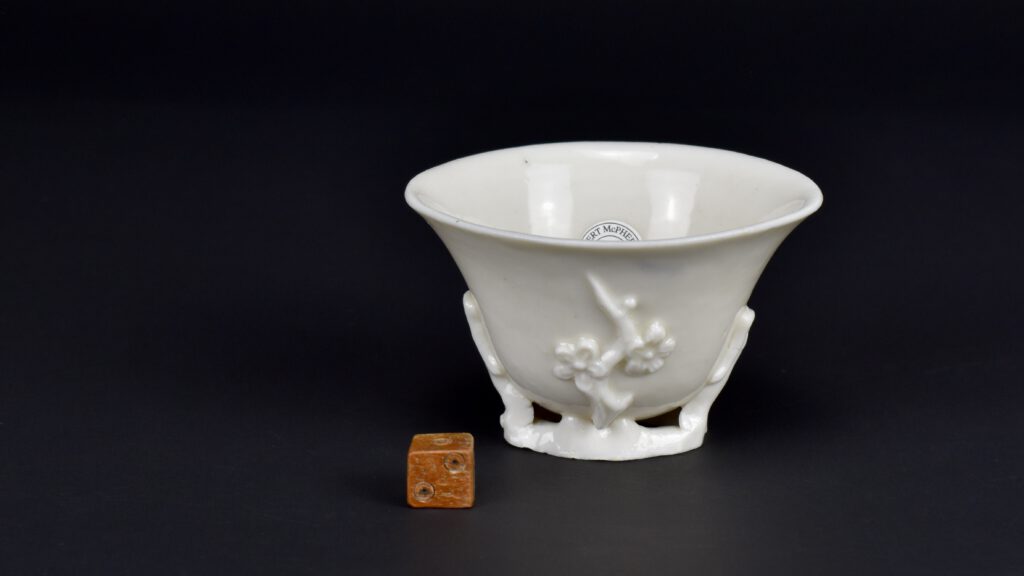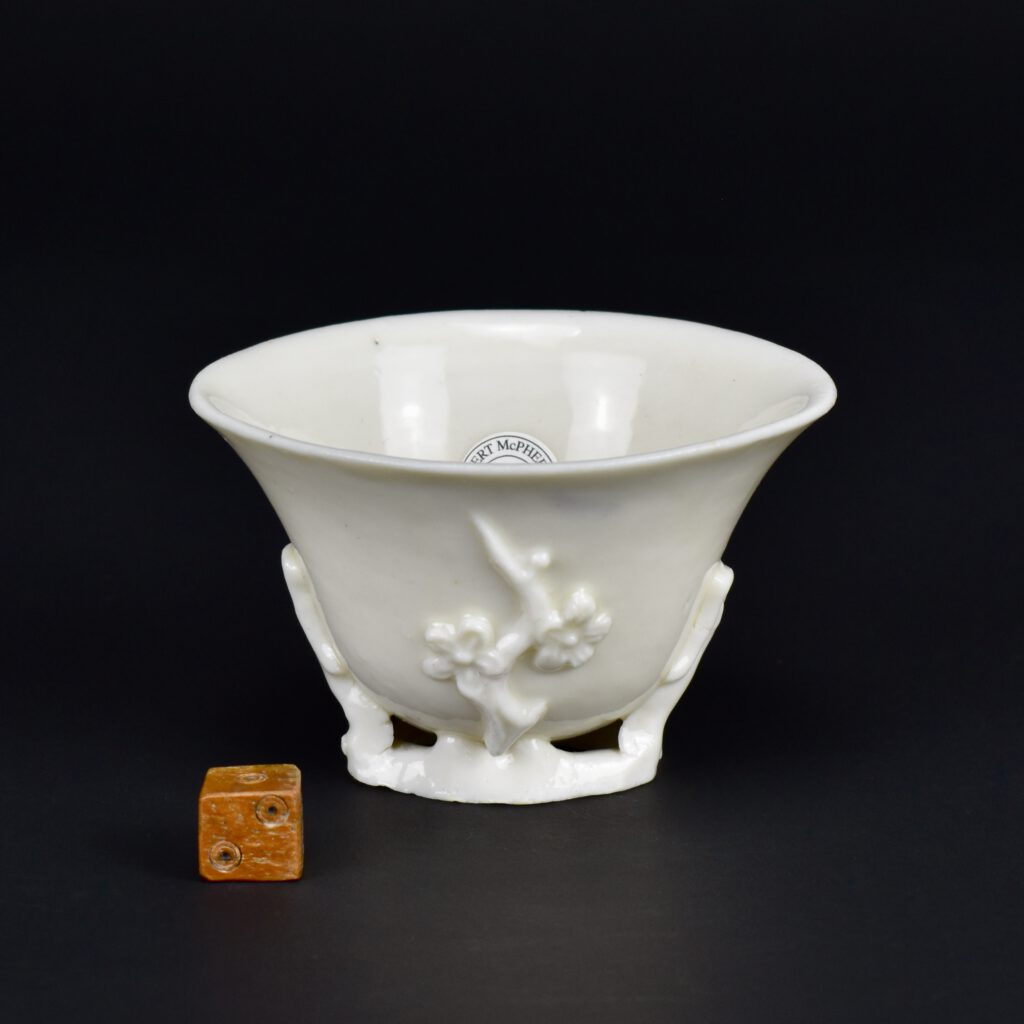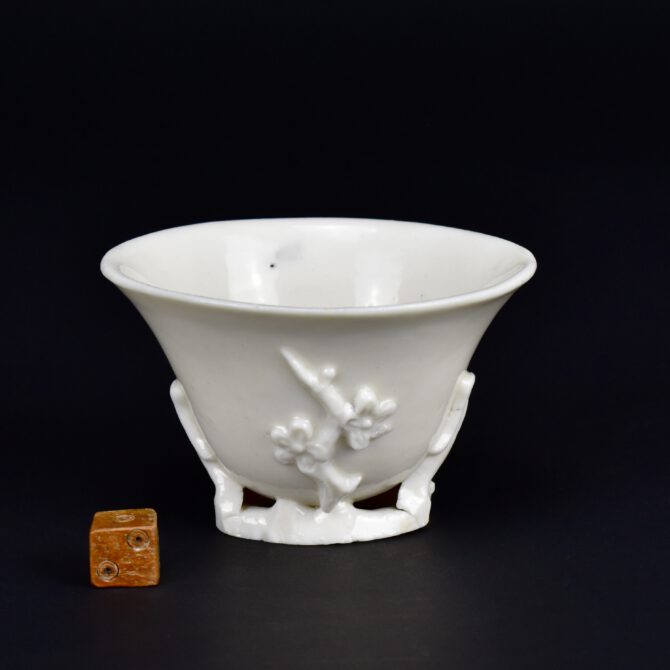
A 17th Century Blanc de Chine Porcelain ‘Libation Cup’
An 17th century Blanc de Chine Porcelain ‘Libation Cup’, Dehua kilns, Fujian Province, late Ming to Kangxi period c.1640-1700. Blanc de Chine cups of this type have been traditionally referred to as Libation Cups but in truth they were probably wine cups. The shape follows that of Chinese rhinoceros horn cups which were made locally. It is interesting baring in mind the important powers that the Chinese attach to this material, that by using a Blanc de Chine porcelain cup of this form some of the powers of real rhinoceros horn might be conveyed to the drinker.
See below for more photographs and references.
- Condition
- A minute frit to the rim, perhaps less than 1mm
- Size
- Length : 8.5 cm (3 1/2 inches) Height 5.3 cm (2.1 inches).
- Provenance
- Stock number
- 27205
- £ GBP
- € EUR
- $ USD
Information
A Similar 17th Century Blanc de Chine Cup
Robert McPherson Antiques Sold Archive - 26141.
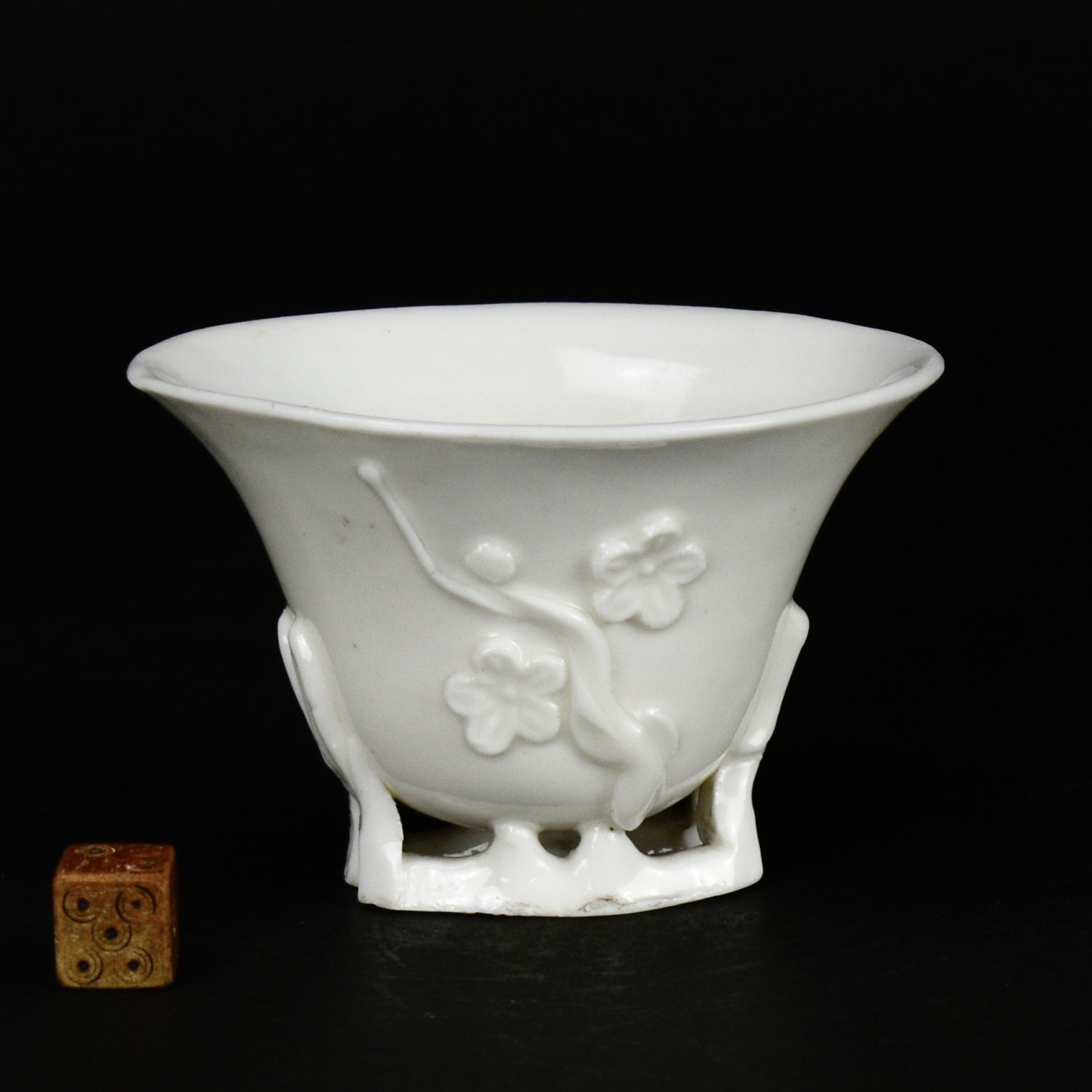
Libation Cups
Blanc de Chine cups of this type have been traditionally referred to as Libation Cups but in truth they were probably wine cups. The shape follows that of Chinese rhinoceros horn cups which were made locally. It is interesting baring in mind the important powers that the Chinese attach to this material, that by using a Blanc de Chine porcelain cup of this form some of the powers of real rhinoceros horn might be conveyed to the drinker.
Blanc de Chine Porcelain
The porcelain known in the West as Blanc de Chine was produced 300 miles south of the main Chinese kiln complex of Jingdezhen. The term refers to the fine grain white porcelain made at the kilns situated near Dehua in the coastal province of Fujian, these kilns also produced other types of porcelain. A rather freely painted blue and white ware, porcelain with brightly coloured `Swatow` type enamels as well as pieces with a brown iron-rich glaze. However it is the white blanc de Chine wares that have made these kilns famous. The quality and colour achieved by the Dehua potters was partly due to the local porcelain stone, it was unusually pure and was used without kaolin being added. This, combined with a low iron content and other chemical factors within the body as well as the glaze, enabled the potters to produce superb ivory-white porcelain.
Plum Blossom / Meihua
Plum (Prunus), Meihua, is one of the most important plants in Chinese art. Their flowers grow on knurled old angular branches, the flowers are fragile and pure, so they can be a symbol of vigour in old age as well as purity. The tree is the first to flower after the long hard winter, symbolically it can represent perseverance as well as renewal. This meaning is enhanced by a background of cracked-ice, the design can be seen as representing the end of winter and the beginning of spring with the ice of winter cracking to reveal a new year dawning. Branches of plum blossom convey the `Five Blessings` Meikai wufu, longevity, wealth, health, love of virtue and a peaceful death. The number five, an auspicious number to the Chinese, is taken from the five petals of the plum flower.
